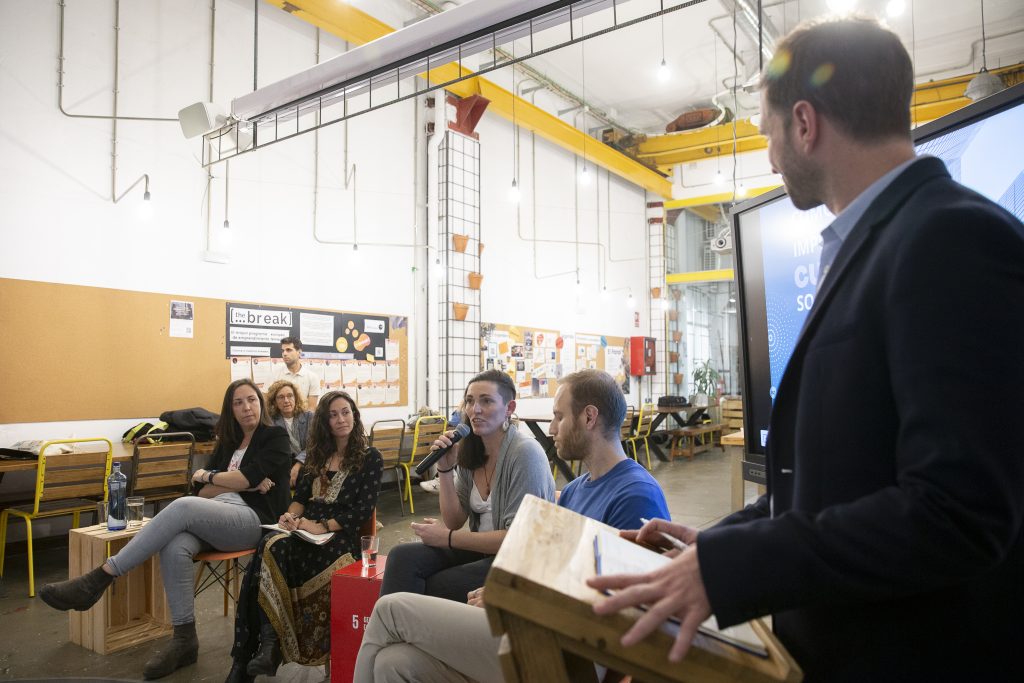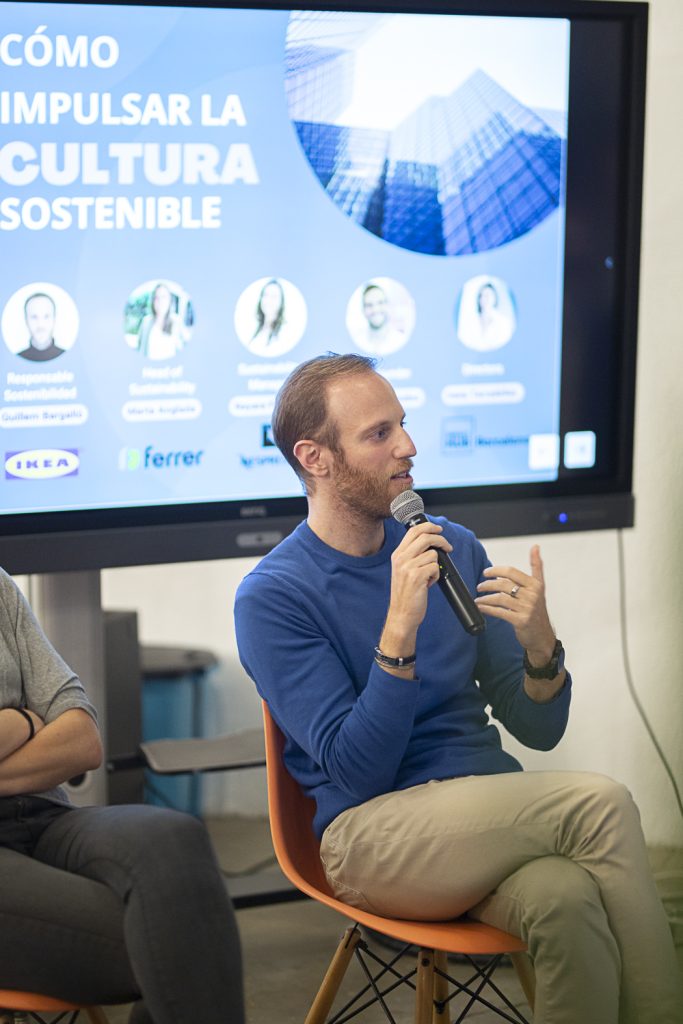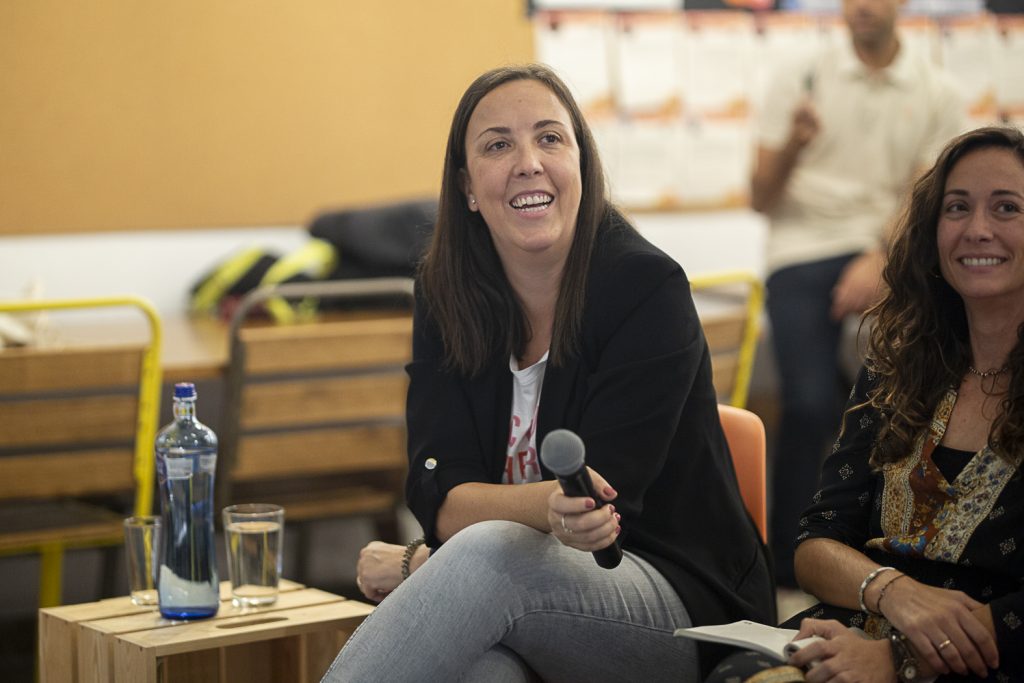On November 2, we had the opportunity to talk openly with four exceptional people with the hope that, from their experience, they would help us clarify what a sustainable culture is and how it should be built.
To our pleasant surprise, all the speakers were especially well aware of sustainability, and for a long time, even before this was such a staple among organizations.
The speakers
Guillem Bargalló, head of sustainability at Ikea Catalunya, assured us that working for sustainability was his calling; Likewise, Marta Anglada, head of sustainability at Ferrer, was long considered a “greenpeace geek.”
Nayara Fuentes, sustainability manager at Nespresso, has dedicated her entire life to sustainability, and for Irene Tarradellas, director of ImpactHub Barcelona, sustainability is something that comes from within her and that she has known since she was very little.

With this line up of responsibility and awareness for the planet and for people, we began a conversation that we will try to summarize as best as possible below.
With many questions to ask and doubts to clarify, our objective, and in particular that of Ignacio Barriendos, CEO of DoGood, and moderator of the event, was to find out how sustainable culture is lived in companies, and above all, how it can be promoted.
Involve employees in the sustainability strategy
Find out more about how we help drive engagement
The questions
What will the world be like when we truly have a sustainable culture?
With this first question that Ignacio asked, the session began, and of course the answers did not disappoint in the least. Although varied and nuanced by each speaker, without a doubt people and social issues were at the center of all the responses.
Marta: I believe that the idea is that we achieve that goal, and that at some point sustainability departments will not exist. We are all interconnected, and the decisions of one impact everyone else, so a well-implemented sustainable culture would be ideal, that is, a way of being generous, of caring for others, at least in a social way.
Guillem: Companies have not changed, people have changed. We see many companies transitioning to sustainability without having really made the human change (…) A culture must be generated that helps people make this change. If we do not change who we are, as humans, we will not see a sustainable culture.
Irene: Being sustainable is not only being greener, it is also being fairer, or having more peace. Sustainability is also the social impact we create with what we do. That is to say, in a world in which sustainable culture is permeated, there is no inequality. Companies are not entities that move through the world as companies, they are people who lead initiatives, value propositions, etc.
Nayara: We have to change the role that businesses play in society. That is, a company can create value throughout its value chain, from any shareholder to any stakeholder. In the end, large companies can also have a positive impact. It is true that the negative is very large, but what about the positive?
What is the path that a company has to follow to accelerate this transition?
And if indeed a world where sustainable culture prevails and is permeated is a better, fairer world and without a doubt, a place where anyone would want to live, what are or should companies be doing to reach this apparent utopia?
Nayara: One of our pillars, for example, is to inspire collective actions both internally and externally (…); but success, without a doubt, lies in collaborations, we cannot do it alone. We can finance and we can lead, but alone we cannot act.

Guillem: Firstthing’s first, purpose; companies need to be sure where they are heading towards. Secondly, purpose should be linked to a board and to executives who are totally involved in it (…) The third step is to audit your entire value chain, because this is where the problem is, not in the plastic cups. (…) The fourth step: how do you get your people as involved as you are in this whole purpose? (…) And finally how do you communicate that of course.
Irene: Several of the things you have said are linked to governance. And the thing is that ESG is trending, (..) and without the G nothing happens either around the S or the E (…); The G is about what decisions you make and how you make them, if you make them collectively, if there is space for people in the company to share their concerns and ideas, how to make that company better etc. (…), information is also important, that is, is there information for these people to make these decisions or participate in these concerns? And that for me is totally related to culture.

What are the biggest barriers you have encountered? Where are they?
Of course, not everything that glitters is gold, and even in large organizations there are obstacles to overcome and barriers to break to achieve and build a sustainable culture like the one the speakers described to us.
Marta: In the past there were many cultural barriers, for example. Now I think the challenge (at Ferrer) is speed, everything goes very fast and people try but many times they don’t know how to integrate that purpose. There are areas that are more mature than others. Everything we want to happen at 100% is a very long process, so it’s about finding a balance.
Irene: In the case ofSMEs, they can often only think about surviving day to day and do not have time to think about what sustainability is. And I believe that as organizations we have the duty to facilitate this transition for those companies that do not have such large departments and with so many resources to promote that transition.
How do you explain to a CEO that all these “hippie ideas” are going to make him earn more and improve his company?
Marta: Talent. What this purpose does is attract the best talent. People have to transcend both inside and outside the company. Talent does not look for a job in a company whose CEO does not have those values. People’s talent will lead us to change, sooner or later.

Irene: Young people want to work in companies that take care of the world, and their employees. And that’s also what the best want. So you want the best, you need that.
The final conclusions
Building a sustainable culture is undoubtedly the way forward, and especially for large organizations that can help lead the way as relevant agents of change, both for society and the market.
But we cannot forget that companies and organizations are nothing more than people. This means that change must first occur in each person as an individual, and of course, the workplace can become the perfect environment for this human transformation.
Ultimately, collaboration is what will make sustainable culture succeed or fall halfway; a collaboration that puts the planet and people at the center of every conversation.
And these are just some of the most notable reflections and comments that Guillem, Marta, Irene and Nayara gave us, from their particular experience, but above all, from a deep knowledge and awareness of sustainability.
We are very grateful to have been able to share this moment and conversation so important with all the attendees who accompanied us that afternoon, and who also contributed their grain of sand to the evening.
